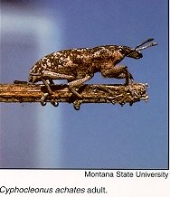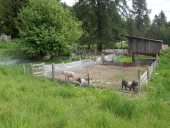








Idle dreamer




It seems that the perfect bioccumulator would have the very deep and hungry, flood-tolerant roots and fleshy foliage of comfrey while fixing some nitrogen of its own, thriving in dry conditions (especially by drawing water from depth and having low transpiration loss) and producing a useful fruit or seed product.
The ultimate goal of farming is not the growing of crops, but the cultivation and perfection of human beings. - Masanobu Fukuoka





Idle dreamer













The ultimate goal of farming is not the growing of crops, but the cultivation and perfection of human beings. - Masanobu Fukuoka








Pouletic wrote:
I can appreciate the importance of a compostable bioaccumulator with deep roots able to extract or recover deep minerals. I have my doubts about using comfrey for this purpose. These concerns come from the toxicity of comfrey to animals, its potentially irritating foliage, poor drought tolerance (from what i have read) and its inability to fix nitrogen.





Kirk Hutchison wrote:
While we permies love comfrey, be sure that embracing it is not a permaculture principle.

It just happens to be very useful for a number of reasons. The leaves are not irritating to me, but that could vary from person to person. Comfrey does lose leaves in drought, but it seems to bounce back pretty quickly. I'm sure there are other, similar plants for drier climates. The leaves break down very quickly, which is why it is so valued as a soil builder.
rbrgs wrote:
Sweet clover, although it's also toxic to animals. Or alfalfa, but that will only grow if the land is fairly fertile to begin with.
Look for wild legumes in ditches and along the roadside.




"the qualities of these bacteria, like the heat of the sun, electricity, or the qualities of metals, are part of the storehouse of knowledge of all men. They are manifestations of the laws of nature, free to all men and reserved exclusively to none." SCOTUS, Funk Bros. Seed Co. v. Kale Inoculant Co.









|
Every noble work is at first impossible. - Thomas Carlyle / tiny ad
Homestead Pigs Course
https://permies.com/wiki/365748/Homestead-Pigs
|
.jpg)



